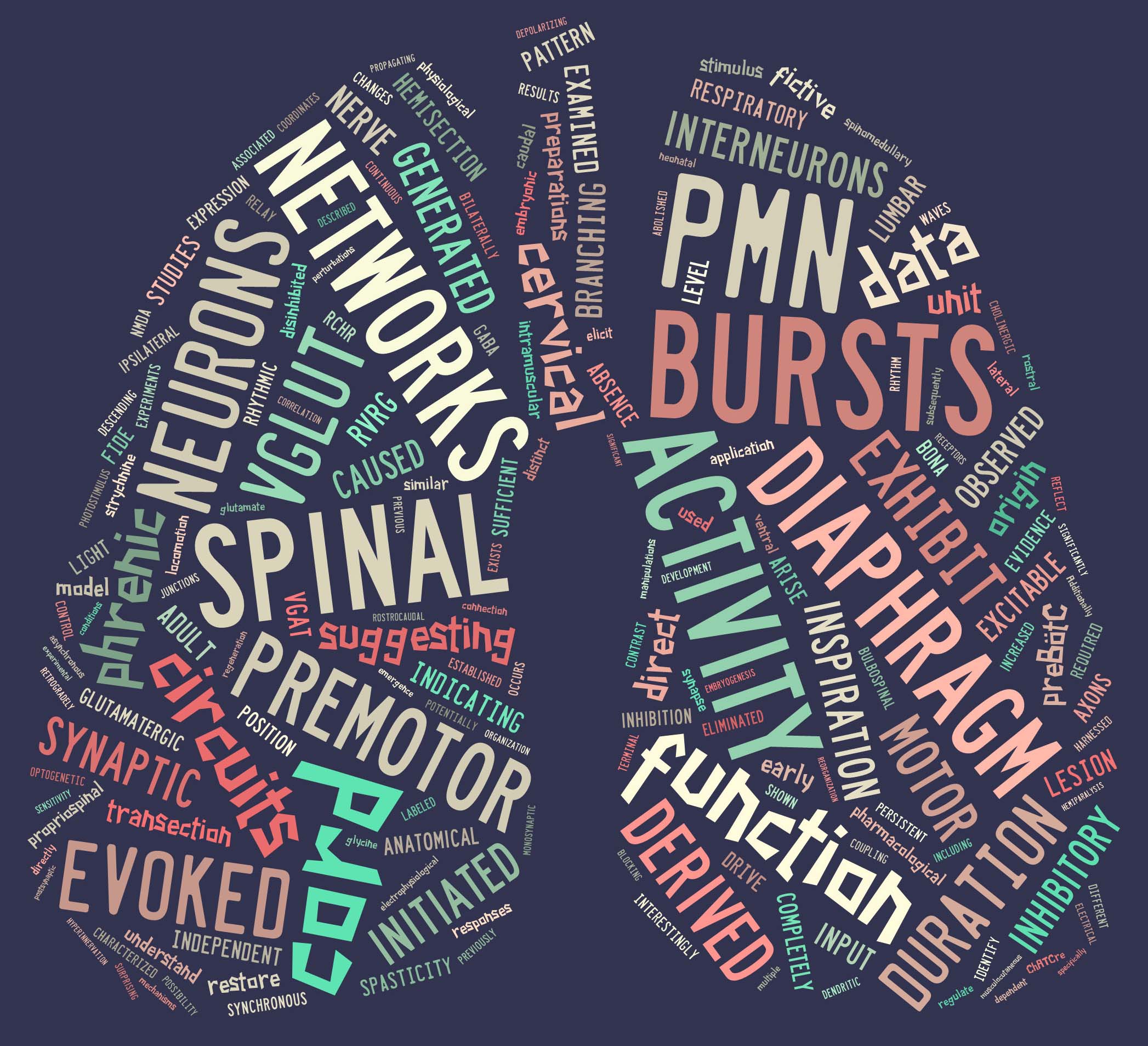Brainstem Circuits for Respiration
Respiration, a continuous behavior in mammals, is governed by the brainstem’s preBötzinger complex. Our research has demonstrated that inhibition is essential for rapid respiratory rates during activities like exercise.
Rhythm Generation Across the Frequency Spectrum
 |
|
|
Respiration is unique amongst the behavioral repertoire in that it is continuously active throughout postnatal life. Indeed, humans breathe ~20,000 times per day and hundreds of millions of times over the average lifespan. In mammals, respiration is orchestrated by a distributed brainstem network, where a medullary nucleus termed the preBötzinger complex is critical for generating the respiratory rhythm.
Respiratory rate is constantly adapted to meet both homeostatic and behavioral needs. In previous work, we investigated excitatory and inhibitory mechanisms for controlling respiratory rate at precise frequencies. Unexpectedly, and in contrast to the classic model, we discovered that inhibition is requisite for fast modes of respiration as occur during exercise (PNAS, 2017).